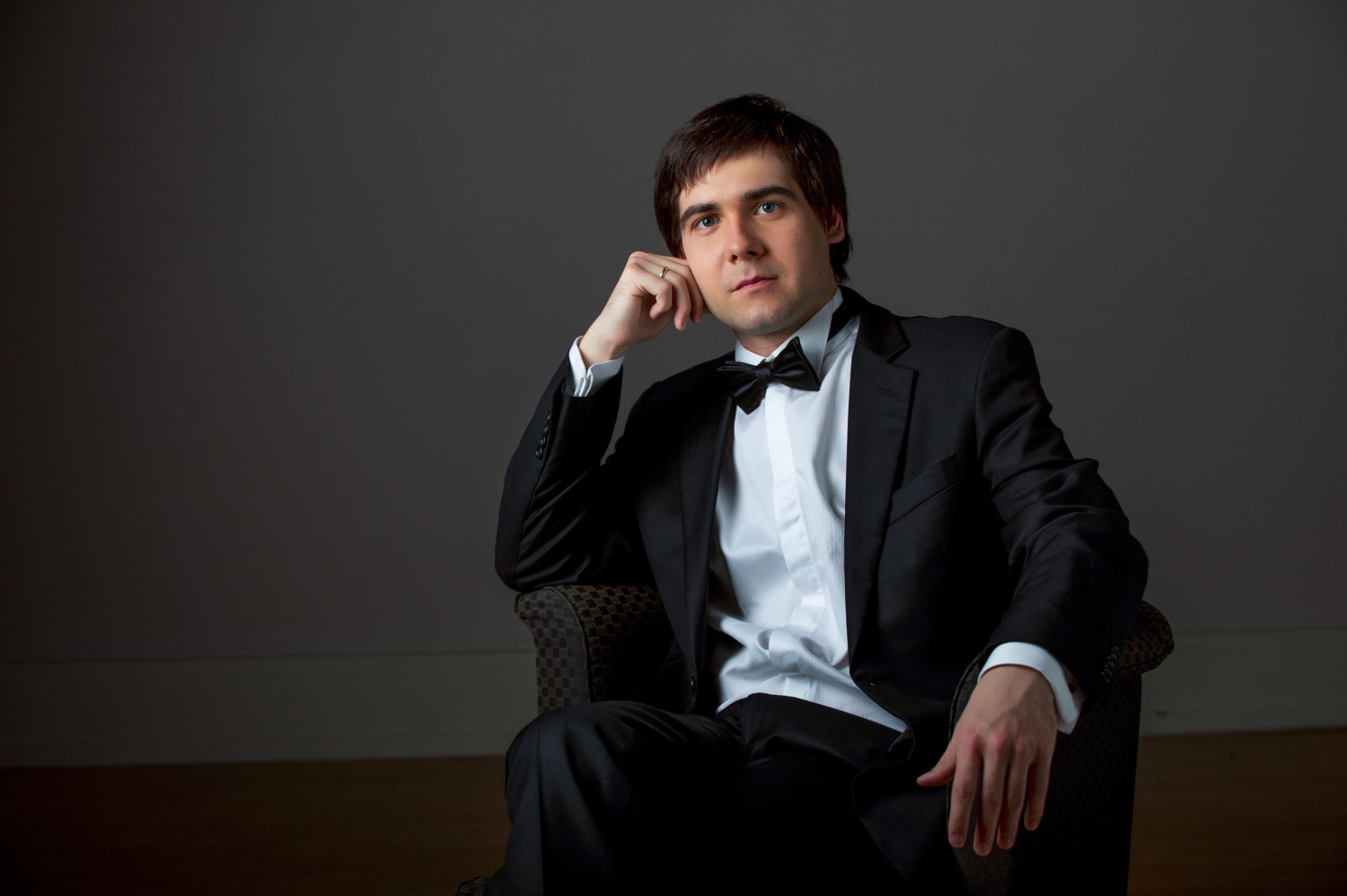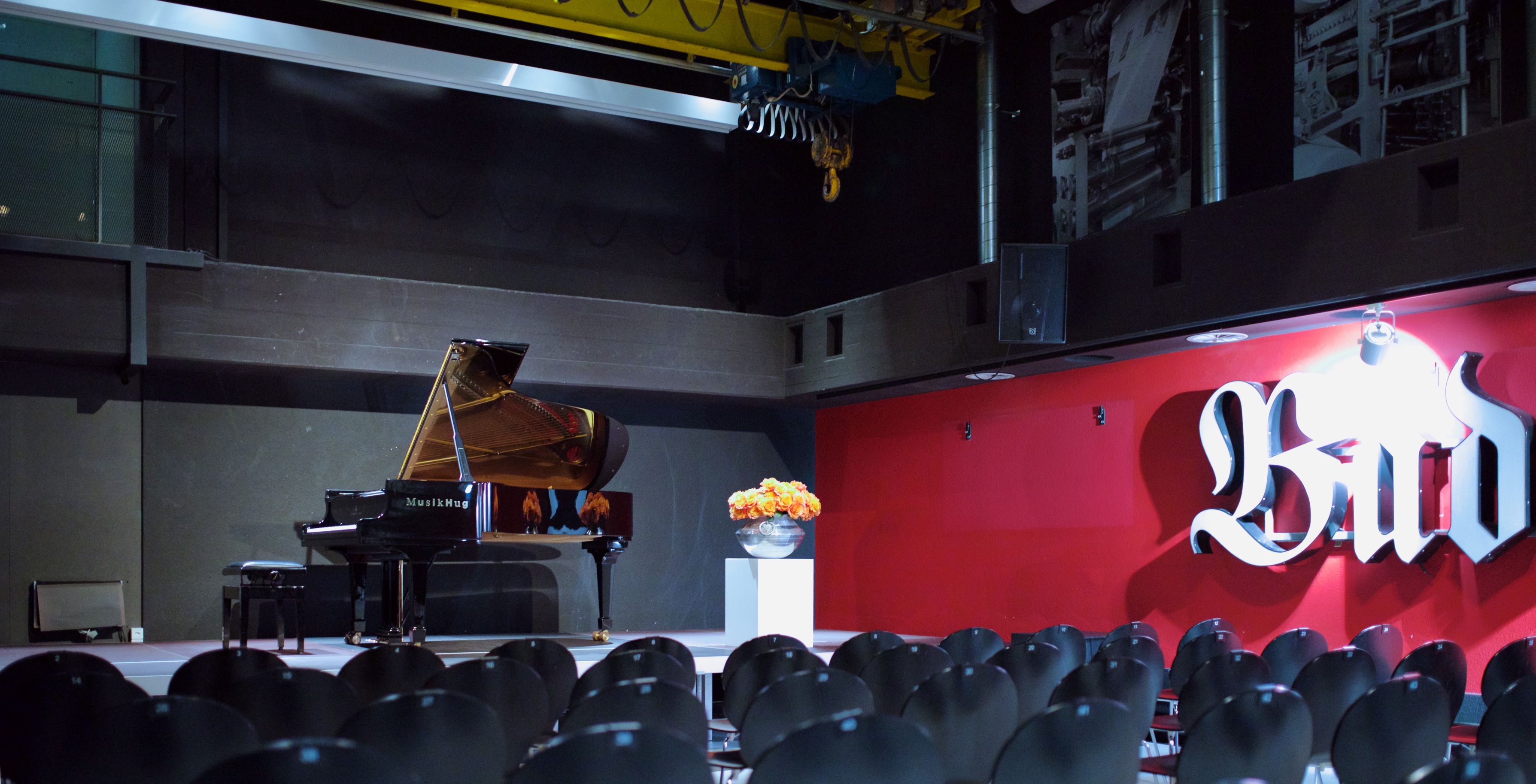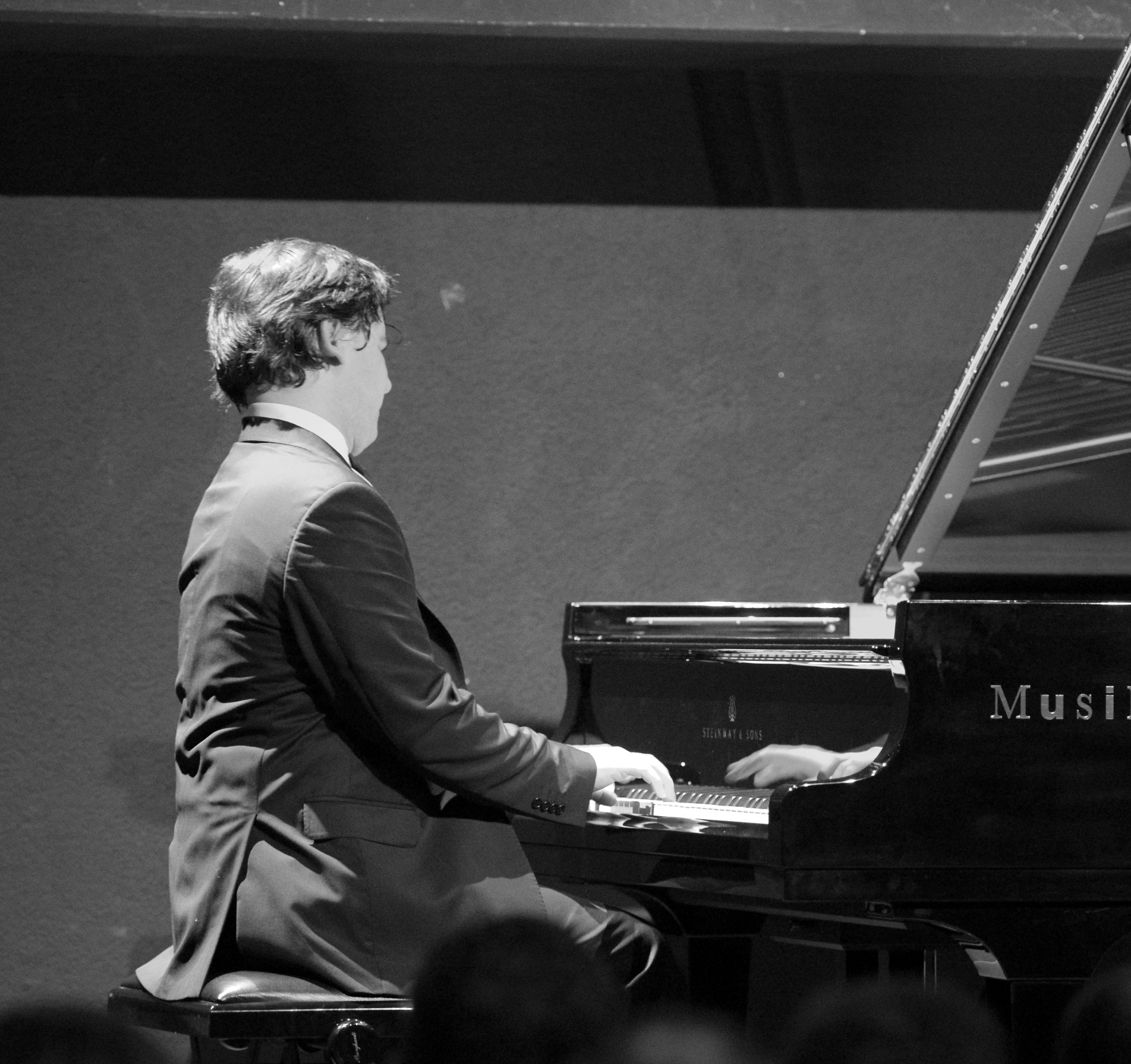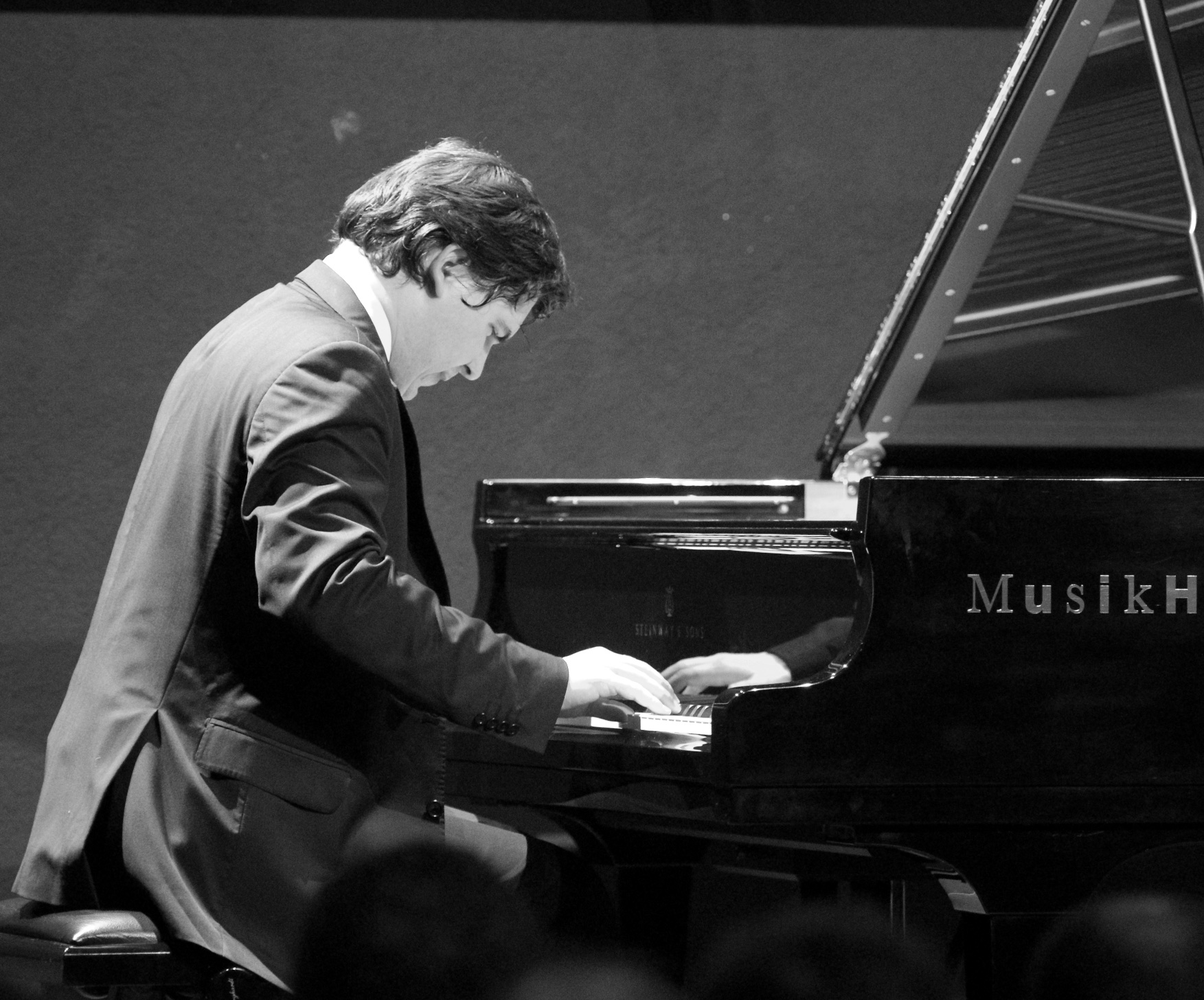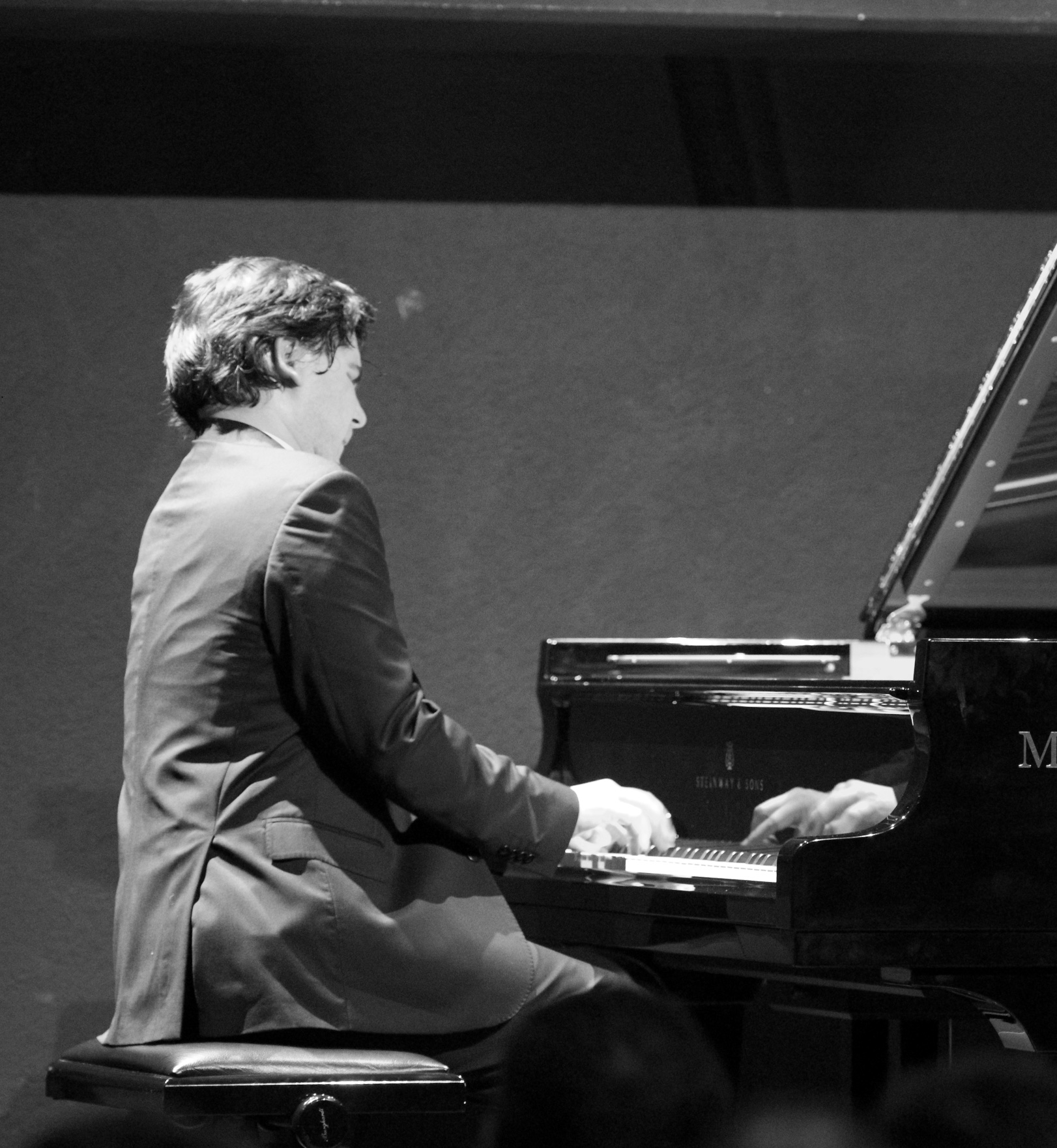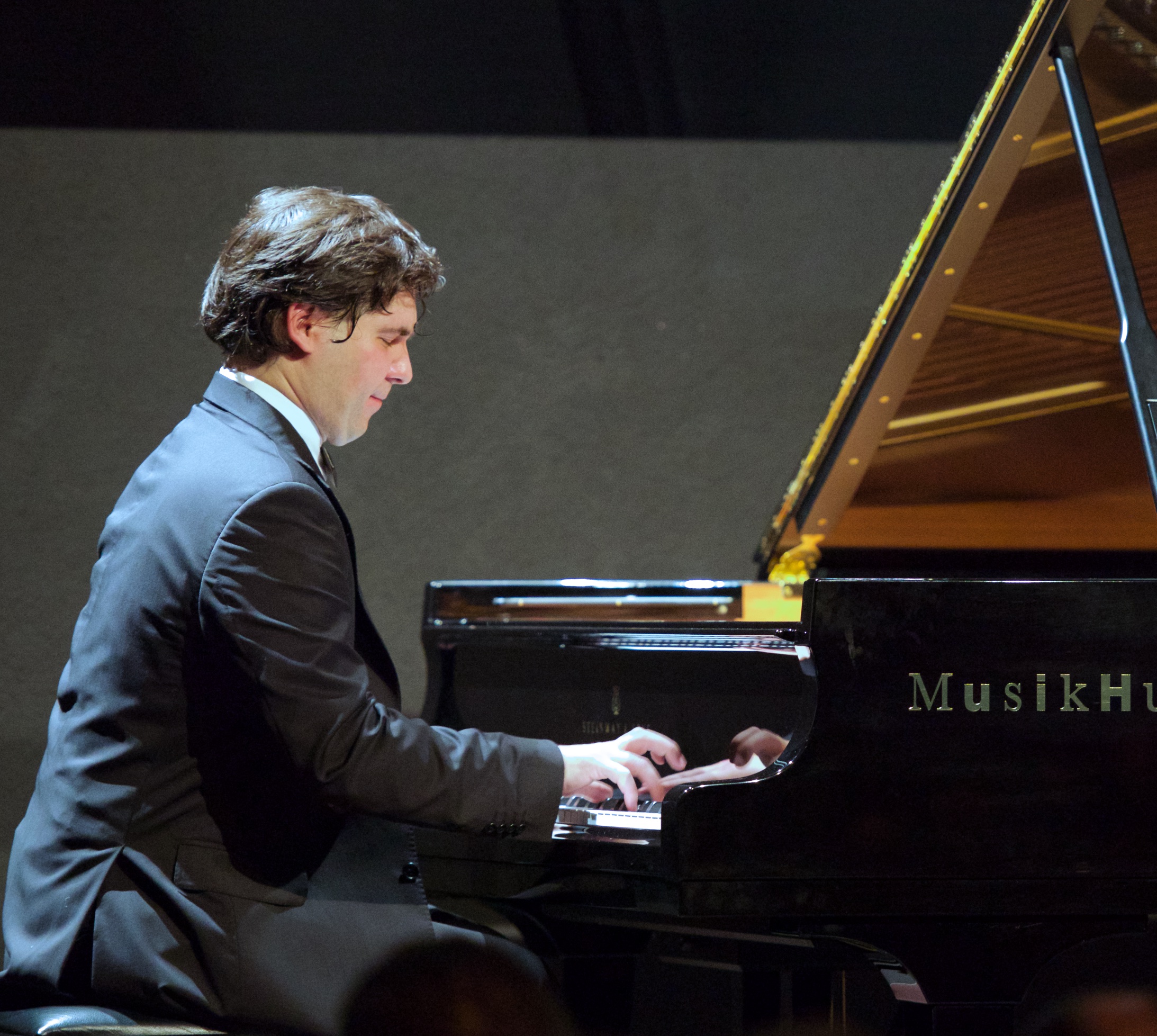Piano Recital: Vadym Kholodenko
Liszt / Scriabin / Rachmaninoff
Druckerei, Baden/CH, 2017-03-17

2017-03-25 — Original posting
Table of Contents
Introduction
Vadym Kholodenko
The pianist Vadym Kholodenko (*1986) grew up in Kiev, Ukraine. His international career as a pianist took off with a big splash when he won the first prize at the 14th Van Cliburn International Piano Competition in 2013. His first international appearances (U.S., China, Hungary, and Croatia) date back to 1999. In 2005 he began studying at the Moscow P. I. Tchaikovsky Conservatory under Vera Vasilievna Gornostaeva. Prior to the 2013 competition, between 1998 and 2012, he has been collecting prizes at various other competitions. Up till recently, Kholodenko resided in Fort Worth, TX. According to the French Wikipedia, Vadym Kholodenko now resides in Luxemburg, with the Kazakh violinist Alena Baeva, his musical partner for the past 8 years.
Clever Recital Programming
Already a first glance revealed that Vadym Kholodenko composed his recital program very diligently. In the first half of his performance, he started with highly romantic music by Franz Liszt, building up from a dreamy Prélude to the highly virtuosic Mephisto Waltz, then switching to Scriabin. There again, he began with the late-romantic fourth piano sonata, moving on to the more post-romantic Sonata No.5. The latter is a musically and technically demanding piece.
After the intermission, he stayed in the tonal, late-romantic repertoire, devoting that part entirely to music by Sergei Rachmaninoff. Here again, he started off with musically simpler Préludes, then moved on to the much more demanding Études-tableaux, ending with a selection from op.39. These latter are intricate, if not acrobatic piano music. Both halves of the recitals formed logical, harmonious, “dramatic arrangements”, as did the two halves combined. It all made sense to me, not only musically, but also from the point-of-view of managing physical demand / strain. Already at the onset, the evening looked very promising!
Liszt: Études d’exécution transcendante, S.139
I have written about the 12 Études d’exécution transcendante, S.139, by Franz Liszt (1811 – 1886), in the context of a CD comparison (2012-04-25), so I’ll just list the 12 Studies in the original order (I marked the three pieces which Kholodenko selected in bold):
Volume I
- Preludio (Presto, C major)
- Fusées (Molto vivace, a minor)
- Paysage (Poco adagio, F major)
- Mazeppa (Allegro, D minor)
- Feux follets (Allegretto, B♭ major)
- Vision (Lento, G minor)
- Eroica (Allegro, E♭ major)
Volume II
- Wilde Jagd (Presto furioso, C minor)
- Ricordanza (Andantino, A♭ major)
- Appassionata (Presto agitato molto, F minor)
- Harmonies du soir (Andantino, D♭ major)
- Chasse neige (Andante con moto, B♭ minor)
Vadym Kholodenko chose to start with No.9, “Ricordanza“, from the second volume. He continued with No.6, “Vision“, concluding with No.5, “Feux follets“, both from the first volume.
The Performance
9. Ricordanza (Andantino)
The first piece in the recital already gave an idea of Kholodenko’s imaginative, picture-rich playing: dreamy and pensive initially, living up in the middle part, as if a large flock of birds was moving up into the air. The piece then built up to almost violently emerging memories. Then, one could feel the thoughts moving away into the distance.
6. Vision (Lento)
Here, I had the vision of stunning, giant, colossal cathedral architecture. Awe-inspiring, culminating in torrents of octave parallels, arpeggios and tremolos, spanning the entire keyboard. The artist knew how to exploit the warm, full sonority of the Steinway B-211!
5. Feux follets (Allegretto)
In stark contrast, Kholodenko played the ghost-like flickering of will-o’-the-wisp (spook-lights) at almost frightening speed. The agogics were deliberately unstable, the articulation not fragmented or lost in details. Rather, they were entirely devoted to expressive “sound painting”.
Liszt: Mephisto Waltz No.1, S.514
The Mephisto Waltz No.1, S.514 by the same composer is a pièce de résistance for many keyboard virtuosos! I have discussed performances of this piece in two concert reviews, one on 2015-11-27 (Denis Matsuev), and a second one on 2015-12-22 (Alexander Malofeev).
The Performance
Kholodenko’s performance of the Mephisto-Waltz No.1 is one of the fastest that I have encountered (Matsuev may have matched this one in the tempo). As the title suggests, the music sounded diabolic, intricate: explosive, impulsive. Intermittently it was also very pictorial, eloquent in the dialog-like segments. Liszt’s music almost drowns the listener in an accelerating sequence of drastic changes of atmosphere, of mood, of tempo. It builds up to an over-excited climax, when the entire scenery appears to plunge into the Orcus. After a short, dreamy interval, the piece concludes with a dramatic, but very short, almost abrupt stretto ending.
Scriabin: Sonata No.4 in F♯ major, op.30
Alexander Scriabin (1872 – 1915) wrote ten piano sonatas. Sonata No.4 in F♯ major, op.30 from 1903 is the last one with a key assignment, indicating a tonal composition. The sonata features two movements, following each other attacca, i.e., without interruption:
- Andante (6/8, 3/8 = 63) —
- Prestissimo volando (12/8, 3/8 = 160)
The Performance
I. Andante
The first movement places the listener into a world beyond romanticism. It reminded me of music by Claude Debussy (1862 – 1918) or Maurice Ravel (1875 – 1937): almost like a sketchy silhouette, forlornness, loneliness.
II. Prestissimo volando
Kholodenko’s “flying Prestissimo” was very impressive! Through rubato and agogics, he avoided making the vivid, strongly syncopated rhythms sound overly jazzy. Yes, the music is enthralling. However, in his hands, it mostly remains a late- or post-romantic sound painting.
Scriabin: Sonata No.5, op.53
Scriabin wrote his Sonata No.5, op.53, in 1907, four years after the previous one. Here (as in all subsequent sonatas), he gave up the concept of movements, and he no longer specified a key, partly leaving tonality behind. Some pianists play this as clearly post-romantic, atonal-jazzy piece, breaking with the tradition of the preceding sonatas by this composer. The main tempo annotations are as follows:
- Allegro, impetuoso, con stravaganza (2/4) — Presto —
- Languido (5/8, 6/8) — Accarezzevole (5/8 — 6/8) — Presto con allegrezza (6/8) —
- Allegro fantastico (2/4) — Presto tumultuoso esaltato (6/8) — Allegro impetuoso (2/4) —
- Languido (5/8, 4/8, 6/8) — Leggierissimo volando (2/4) — Presto giocoso (1/2) —
- Meno vivo (6/8) — Allegro fantastico (2/4) — Meno vivo (6/8)— Allegro (2/4) — Meno vivo (6/8) — Allegro (2/4 — 6/8) —
- Prestissimo — Meno vivo — Allegro (2/4 — 6/8 — 3/4) — Presto (6/8) — Prestissimo
Not only are there numerous meter and tempo changes (in a piece of around 12 minutes)—on top of that, the score is full of accelerando and ritardando annotations.
The Performance
Kholodenko played this sonata as a piece that logically evolves from Sonata No.4, rather than as a revolutionary rupture with the past and into modern music. Yes, the music is less tonal than earlier sonatas. However, here, the artist demonstrated the relationship, highlighting the ongoing evolution in Scriabin’s piano music. Consequently, Kholodenko played this almost attacca to Sonata No.4. Hereby, the transition furiously accelerated towards the Presto, taking off like a rocket.
The Languido appeared like a clear reminiscence of Sonata No.4. It gradually, almost unnoticeably transitioned into the Presto. However, just like in the previous sonata, there was no shallow transition into Jazz. Rather, it felt like a seamless transition onto the percussive rhythm in post-romantic, expressionist music. As the tempo annotations indicate: there are frequent changes between hectic, syncopated segments, and contrasting sections. The latter felt like the void in “Le gibet” from Maurice Ravel’s “Gaspard de la nuit” in the right hand. At the same time, the left hand produced soft grumbling in the underground. Only towards the end, Kholodenko allowed for some jazzy feeling, before the piece ended in a rapidly ascending, accelerating fff / marcato sequence, after which the piano was left resonating for a little infinity.
Rachmaninoff: Préludes, op.32
The music by Sergei Rachmaninoff (1873 – 1943) after the intermission led the listener back into more (late-)romantic music. It was definitely more tonal than the last piece by Alexander Scriabin. As indicated above, Vadym Kholodenko took a gentle start, by playing three of the Préludes op.32. In his op.32, Rachmaninoff collected 13 pieces, out of which Vadym Kholodenko played Nos.1, 2, and 11:
- C major (Allegro vivace)
- B♭ minor (Allegretto — Allegro — Meno mosso — Allegro moderato — Allegro scherzando)
- E major (Allegro vivace)
- E minor (Allegro con brio)
- G major (Moderato) [this was played as encore, see below]
- F minor (Allegro appassionato)
- F major (Moderato)
- A minor (Vivo)
- A major (Allegro moderato)
- B minor (Lento)
- B major (Allegretto)
- G♯ minor (Allegro)
- D♭ major (Grave – Allegro)
In their rhythmic and tempo textures, these pieces may sound simpler / easier than Scriabin’s music. However, they are nevertheless serious pianistic challenges!
The Performance
1. Prélude in C major (Allegro vivace)
People in the audience probably still had the spectacular, percussive ending of Scriabin’s Sonata No.5 in their mind. This made the first one of the Préludes sound particularly sonorous, flowing, late-romantic. I liked the harmonious build-ups, the arches in this interpretation.
2. Prélude in B♭ minor (Allegretto — Allegro — Meno mosso — Allegro moderato — Allegro scherzando)
This piece (structurally the most complex in op.32) was entirely about expression, rather than about extroverted virtuosity. I liked the dynamic balance in this piece, and how Kholodenko was able to let the middle voices come through. The Meno mosso felt like pure sound painting. Rachmaninoff uses motifs rather than melodies in this piece.
11. Prélude in B major (Allegretto)
Overall, No.11 is a melancholic piece. It’s interesting, with its “tilted”, seemingly unbalanced, “suspended” rhythms, disappearing into silence.
Rachmaninoff: Études-tableaux, op.33
In his Études-tableaux, op.33, which Sergei Rachmaninoff (1873 – 1943) composed 1911, there were originally 9 pieces (“study-pictures”). However, in the final version, the composer moved Étude-tableau No.4 into a second batch, later published in op.39, as No.6 (see below). The remaining 8 pieces are labeled as follows:
- F minor, Allegro non troppo, molto marcato
- C major, Allegro
- C minor, Grave
- D minor, Moderato
- E♭ minor, Non allegro — Presto
- E♭ major, Allegro con fuoco
- G minor, Moderato
- C♯ minor, Grave — Poco meno mosso
Most editions have the pieces re-numbered, though the original numbering (referring to numbers 5, 6, 7, 8, 9) is still . I’m sticking to the original numbering scheme (the concert program had No.5 listed as No.4).
The Performance
Étude-Tableau op.33/2 (Allegro, C major)
A very atmospheric piece, like birds singing in spring. Or other sounds of nature, above a titillating, iridescent plane for my inner eye. Musically I felt a single, big, harmoniously formed arch.
Étude-Tableau op.33/3 (Grave, C minor)
Initially, the rolling, ascending octave parallels in the bass sound menacing, almost building up to a serious threat. Luckily, the upper voices (descant and mid-range) are able to pacify the situation. Finally, the piece ends in calm, serene, almost solemn atmosphere.
Étude-Tableau op.33/4 (Moderato, D minor)
An interesting, fascinating movement! It is alternating between pensive hesitation. However, there are also sections with a light, march-like, trotting rhythm. That takes its impulse from the stepping / jumping bass chords.
Rachmaninoff: Études-tableaux, op.39
After his first set, Rachmaninoff collected a second set of 9 Études-tableaux, mostly composed in 1917. These were published as op.39. The piece No.6 is the former No.4 from op.33 (see above). Out of the nine pieces, Vadym Kholodenko played the last four:
- C major (Allegro agitato)
- A minor (Lento assai)
- F♯ minor (Allegro molto)
- B minor (Allegro assai)
- E♭ minor (Appassionato)
- A minor (Allegro)
- C minor (Lento lugubre)
- D minor (Allegro moderato)
- D major (Allegro moderato. Tempo di marcia)
Technically, the studies in op.39 appear substantially more demanding than those he selected from op.33. That certainly applies to the four that Vadym Kholodenko played in his recital. This is highly virtuosic piano playing. And it is very nice music at the same time!
The Performance
6. Étude-tableau in A minor, op.39/6
Not unlike op.33/3, op.39/6 begins with ascending parallel scales in the bass. These appear even more threatening / dangerous than the ones in op.33/3, yet entirely controlled in the articulation. However, that’s episodic, mostly the beginning and the ending of the piece. This contrasts with the initially volatile, titillating figures in the (leggiero) descant, later reminding of a chattering flock of gnomes.
7. Étude-tableau in C minor, op.39/7
This is a true piece for Kholodenko, the sound / keyboard magician! He managed to make dissonant, erratic blocks sound harmonious: a marvelous interplay of tension and relaxation. This continued in the poco meno mosso part with its long melodic arches. These are superimposed to chains of staccato chords, diligently stepping forward, without apparent harmonic goal / target. Towards the end, these staccato chords build up to an impressive ff climax. And all just to calm down again, diluting, making the piece end in ppp silence.
8. Étude-tableau in D minor, op.39/8
To me, this piece felt like serene spring atmosphere. Or maybe the wind playing in leaves, intermittently freshening up to a vivid breeze. A rich painting with light and shadow.
9. Étude-tableau in D major, op.39/9
The culmination of op.39 is in the last piece, with its flashing chord chains. Vadym Kholodenko had full control over his keyboard touch, even in the strongest ff. For sure, it’s very virtuosic music! Even though Kholodenko makes the listener forget about the technical challenges! However, despite the technical demands, Kholodenko managed to play out the lyrical, pictorial, atmospheric aspects, too. He did so truly in the sense of a study-picture!
Encores
As encore, Vadym Kholodenko played another one of Rachmaninoff’s Préludes: op.32 No.5 in G major (Moderato). That’s a wonderful, serene, calm, contemplative piece. I found it to be singing, melodic, atmospheric. It almost reminding me of a “Song without Words” by Felix Mendelssohn Bartholdy (1809 – 1847)!
Conclusion & Summary
Vadym Kholodenko proved to be very sensible, diligent and masterful in composing the recital program. However, the same holds true for the shaping, the structuring of each individual piece. At all times, the musical flow remained harmonious and organic. He was forming impressive, large phrasing arches.
At the same time, he never appeared to try exposing the virtuoso. Mastering the technical challenges is the solid basis for his performance, not the purpose of his playing. It certainly isn’t something he would try showing off. Also, his posture at the instrument is inconspicuous, arms and hands remain relaxed, his fingers appear to caress the keys. Kholodenko avoids big physical gestures, anything that might look like pure show. He even barely appears to take notice of the presence of an audience. He rarely ever seeks eye contact with people in the hall.
However, musically, we definitely witnessed the big gestures!
Describing Vadym Kholodenko’s Playing
The term that came to mind was that of a sound or keyboard magician. Vadym Kholodenko’s articulation was fluent, free-flowing, with really vivid agogics. I was impressed by his legato playing, his singing tone, really gentle in the soft segments. Runs, scales, chains of figurations were always carefully shaped, crafted, yet natural. It was all about expression in his playing, throughout.
Kholodenko’s playing is not about cold, polished perfection. It’s rather about richness in expression, through his very differentiated keyboard touch. And he used these to make melodies—also secondary, hidden ones—sing. The piano tone he produced was warm and mellow in the soft / pp parts. At the same time, he was able to produce an astounding volume from the mid-size Steinway grand (B-211). Hereby, he exploited the full sonority of the well-regulated instruments. However, his playing remained controlled at all times. He would never exceed the possibilities of the instrument, or let the sound degrade. I certainly can’t remember a single instance of a twanging string.
However, beyond these more technical aspects, I found Vadym Kholodenko’s playing extremely eloquent, rich in pictures and colors. And he used rich agogics to achieve plasticity, to tell stories. Yet, his playing and acting seemed unpretentious. A great artist!
Addendum
For the same concert, I have also written a (shorter) review in German for Bachtrack.com. This posting is not a translation of that German review, the rights of which remain with Bachtrack. I created the German review using a subset of the notes taken during this concert. I wanted to enable my non-German speaking readers to read about my concert experience as well. Therefore, I have taken my original notes as a loose basis for this separate posting. I’m including additional material that is not present in the Bachtrack review.


